Fish Platter, Cecil County
From the USS Maryland Silver Service
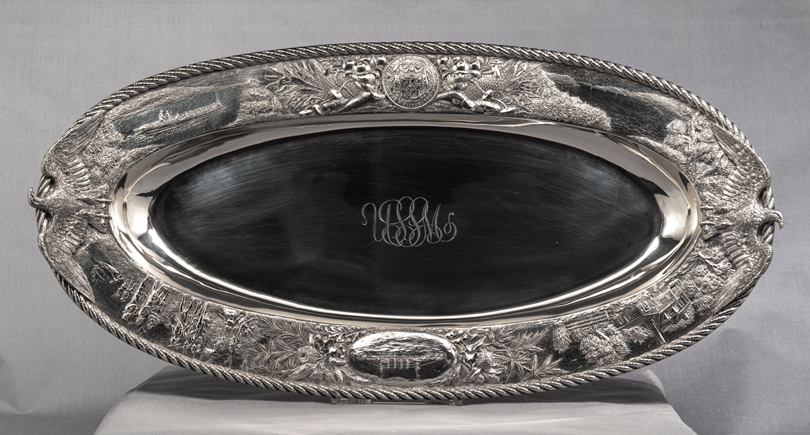
Maker: Samuel Kirk & Sons (1815-1979)
Object: Fish Platter, Cecil County
Date: 1906
Medium: Sterling Silver
Dimensions:
Overall length (eagle to eagle) 26 1/2"; Overall width, 13"
Accession number: MSA SC 1545-0971
Cecil County is represented by a fish platter, the largest serving dish in the service. Cecil County was formed in 1674 from Baltimore and Kent counties and was named for Cecilius Calvert, Second Lord Baltimore.
The designs on the fish platter relate to the nautical boundaries of the county, which are formed by the Susquehanna River and the Chesapeake Bay. The Great Seal is flanked by fish nets against a background of swamp grass and cattails, while the Cruiser is surrounded by sprays of native foliage. As in the other serving platters, the “USSM” monogram is engraved in the center, two eagles are applied to the sides, and the rope border surrounds the perimeter.
Scenes across the top (left to right):1. Fishing on the Susquehanna River (number 71)
Representing that relationship, the scene depicted on the fish platter shows a 14 oar barge hauling a drag net on the Susquehanna River near Havre de Grace, Maryland.
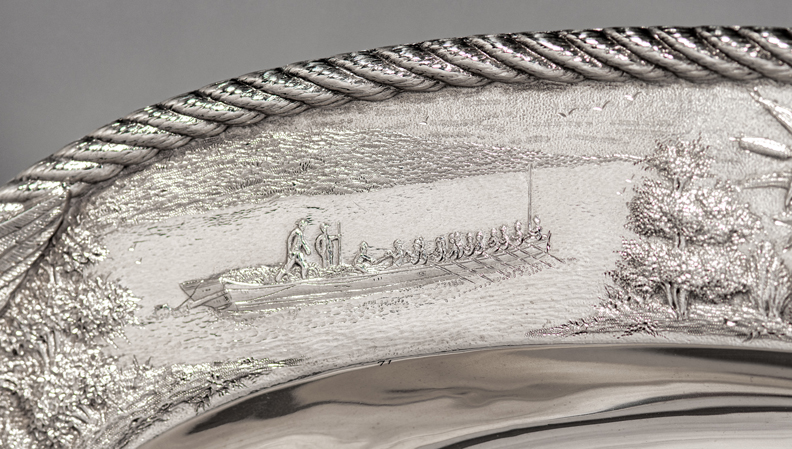
3. Susquehanna River (number 72)
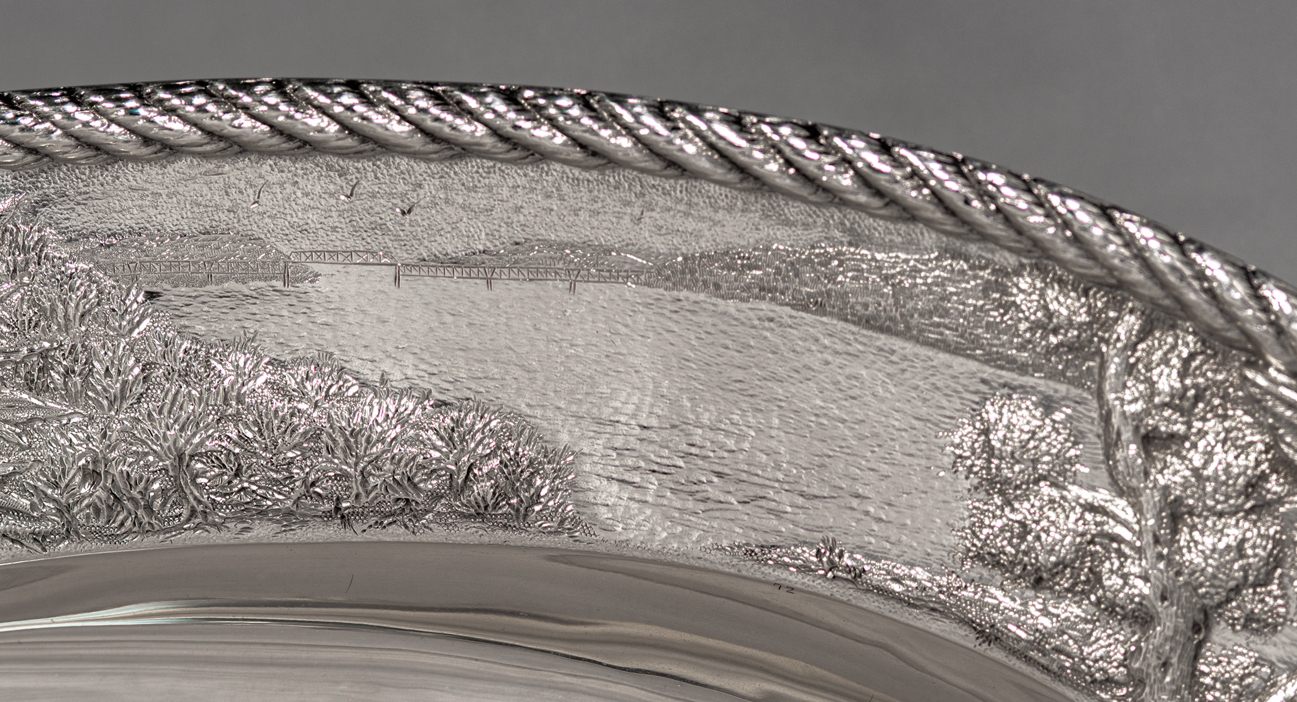
Scenes across the bottom (right to left)
1. Captain John Smith “Bartering” with the Indians, (number 73)
Smith’s first hand accounts describe his view of the Susquehanna River and the various Native American groups he interacted with. This scene shows an imagined meeting between Smith and the Sasquesahanock and Tochwogh, Algonquian speaking Native American tribes, that Smith traded with during his journey.
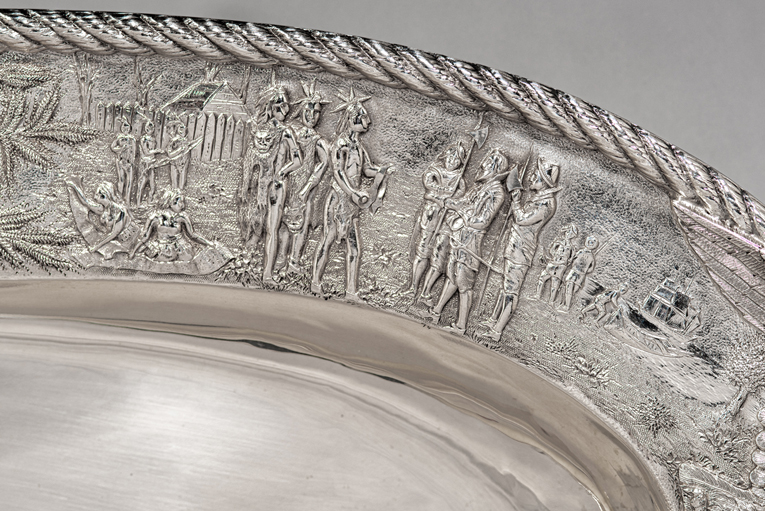
2. USS Maryland Cruiser
3. Kitty Knight Home (number 74)
“Kitty” Knight bravely confronted the advancing British troops who were about to burn more houses in her town and pleaded for them not to burn two homes that were still standing. It is reported that she even stomped out the flames twice. Admiral Cockburn was so impressed with her heroism that he ordered the troops to return to their ships, leaving several homes and a church unharmed.
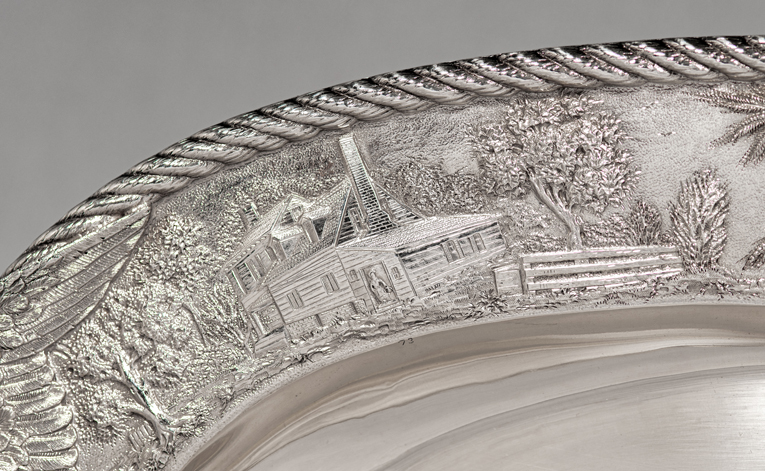
|
This web site is presented for reference purposes under the doctrine of fair use. When this material is used, in whole or in part, proper citation and credit must be attributed to the Maryland State Archives. PLEASE NOTE: The site may contain material from other sources which may be under copyright. Rights assessment, and full originating source citation, is the responsibility of the user. |
© Copyright August 07, 2024 Maryland State Archives
